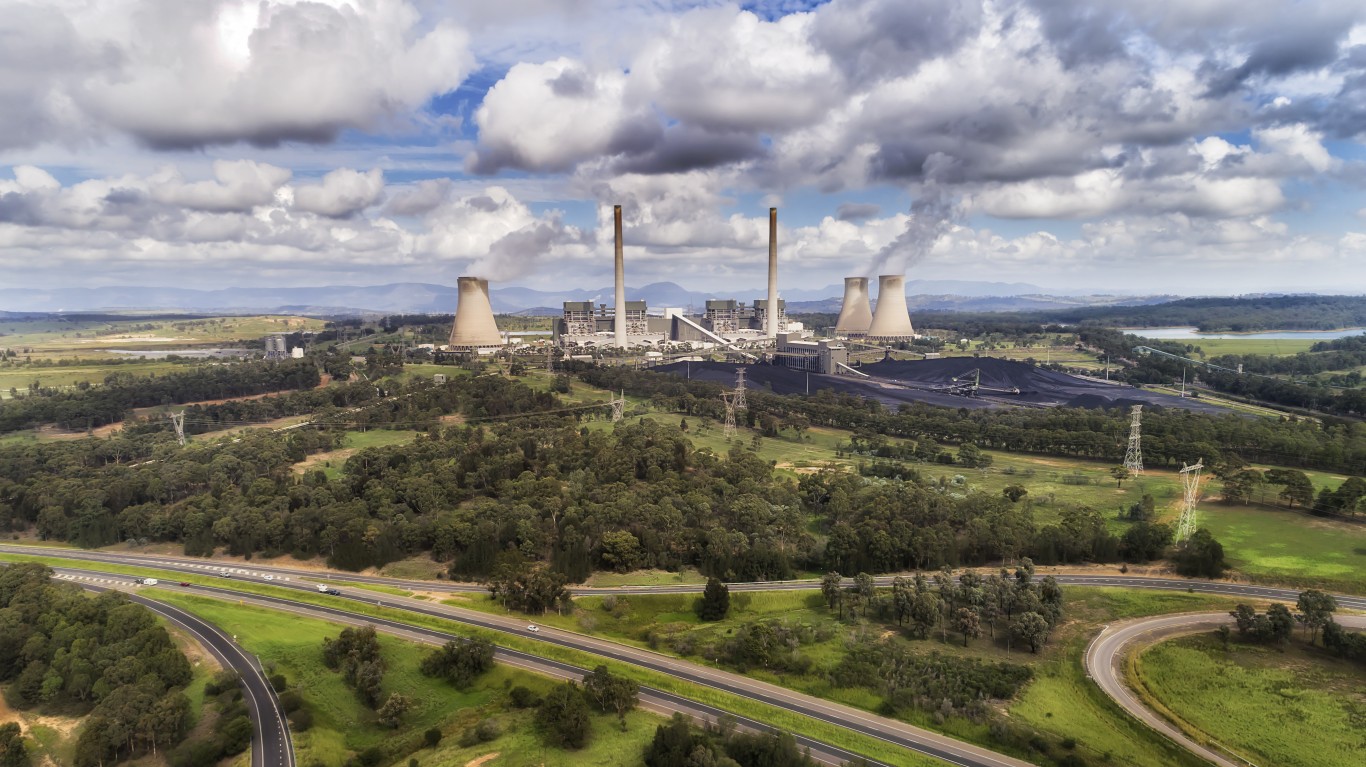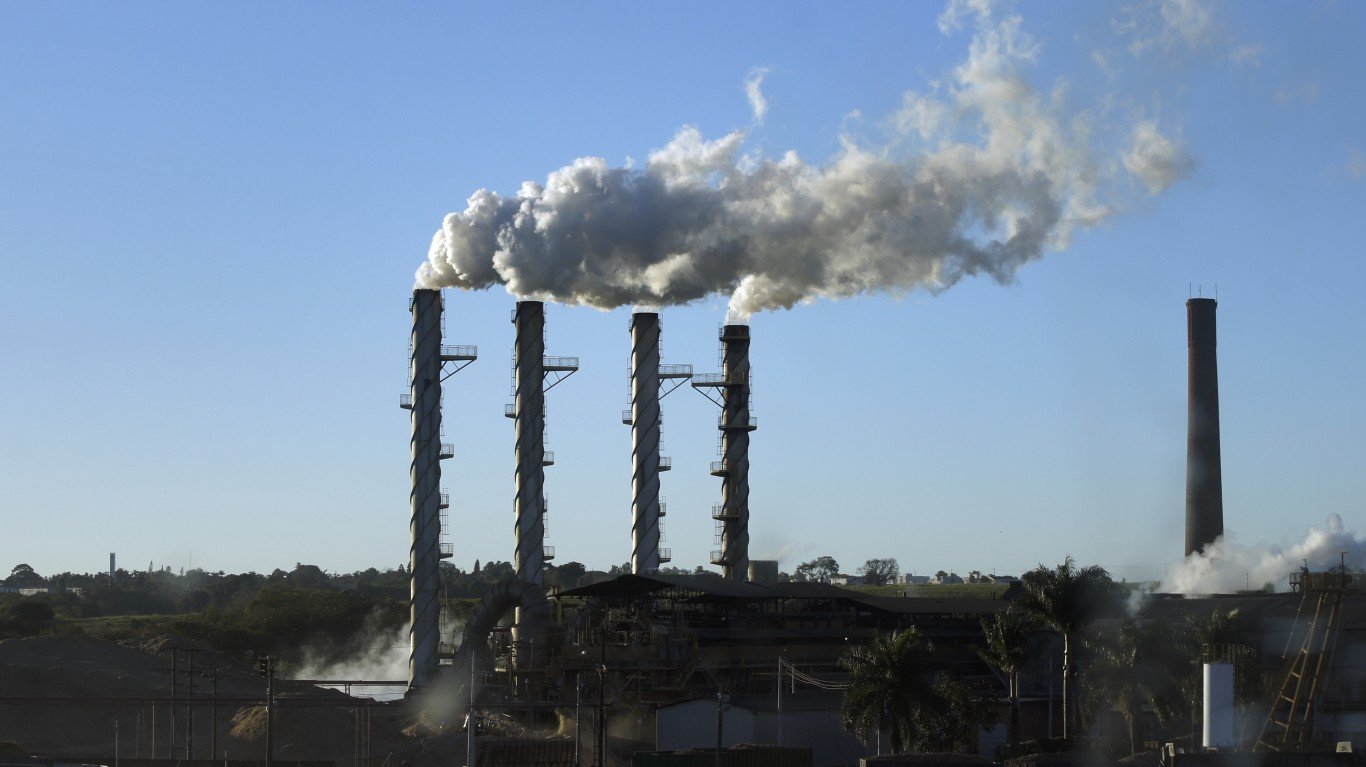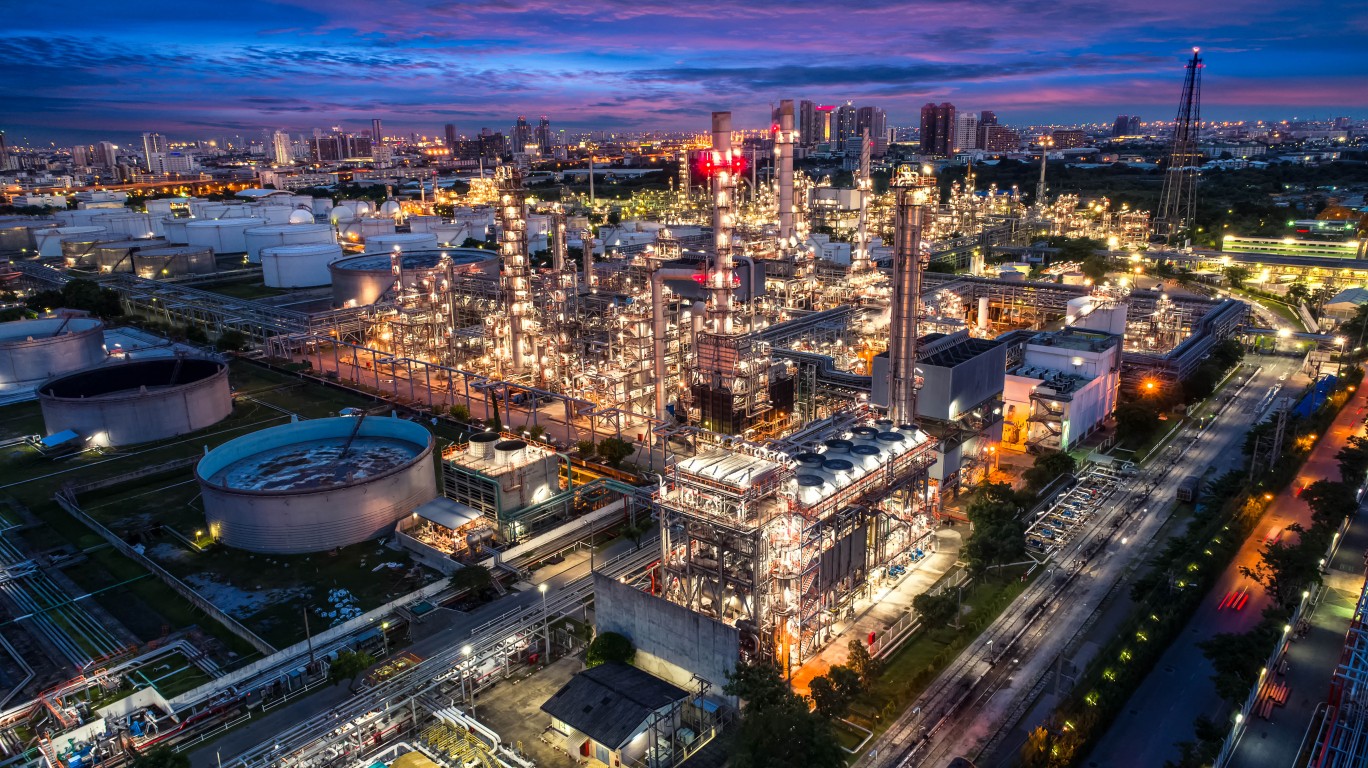
15. Australia
> GHG emissions, 2019: 430.11 million metric tons of CO2 eq
> Pct. of world GHG emissions: 1.14%
> Pct. of CO2 emissions 2020: 1.13% — #15 of 145 countries
> Population, 2020: 25.69 million
> Pct. of world population: 0.33%
Australia, a massive user and exporter of fossil fuels, has been heavily criticized for its approach to climate change. While joining many other countries in setting a 2050 net zero emissions goal, it is focusing on carbon capture and large investments in low emission technology rather than a reduction in fossil fuel emissions. Most agree this is not a winning strategy.

14. Brazil
> GHG emissions, 2019: 450.52 million metric tons of CO2 eq
> Pct. of world GHG emissions: 1.20%
> Pct. of CO2 emissions 2020: 1.34% — #12 of 145 countries
> Population, 2020: 212.60 million
> Pct. of world population: 2.74%
Facing a tidal wave of condemnation for its cavalier attitude toward climate change, Brazil arrived at November’s climate conference in Glasgow with a new sense of urgency. An apparently chastened President Bolsonaro committed to “acting responsibly” as he endorsed tough goals for reducing GHG emissions, and promised to slow the deforestation that has accelerated on his watch and outraged the world.

13. Mexico
> GHG emissions, 2019: 464.92 million metric tons of CO2 eq
> Pct. of world GHG emissions: 1.24%
> Pct. of CO2 emissions 2020: 1.03% — #16 of 145 countries
> Population, 2020: 128.93 million
> Pct. of world population: 1.66%
Mexico has sometimes been viewed as a climate leader among poorer nations, largely based on a history of rhetoric and lofty goals, yet that history has played out as one of backsliding and continued commitment to oil production. With 80% of Mexico’s population concerned about climate change in the face of stronger hurricanes and recurring drought and heat waves, some states and cities within Mexico are moving ahead with their own emission reduction plans without federal help.

12. South Africa
> GHG emissions, 2019: 477.10 million metric tons of CO2 eq
> Pct. of world GHG emissions: 1.27%
> Pct. of CO2 emissions 2020: 1.30% — #13 of 145 countries
> Population, 2020: 59.31 million
> Pct. of world population: 0.76%
Under pressure from investors and environmental groups, and in anticipation of the 2021 international climate summit, South Africa tightened its climate change goals. The lowered emission targets will require a shift away from coal, which currently powers the state-owned energy utility. South Africa’s leadership is seeking billions of dollars in aid to allow a transition to renewables.

11. Saudi Arabia
> GHG emissions, 2019: 581.96 million metric tons of CO2 eq
> Pct. of world GHG emissions: 1.55%
> Pct. of CO2 emissions 2020: 1.80% — #8 of 145 countries
> Population, 2020: 34.81 million
> Pct. of world population: 0.45%
Saudi Arabia is the world’s largest oil exporter and is not about to divorce itself from its fossil fuel economy. Still, the country has pledged to a zero emission goal, which Crown Prince Mohammed bin Salman has set for 2060. Saudi Arabia will attempt to reach its target by shifting to renewables for domestic consumption, planting billions of trees, and employing technology to reduce emissions and remove carbon from the air.






